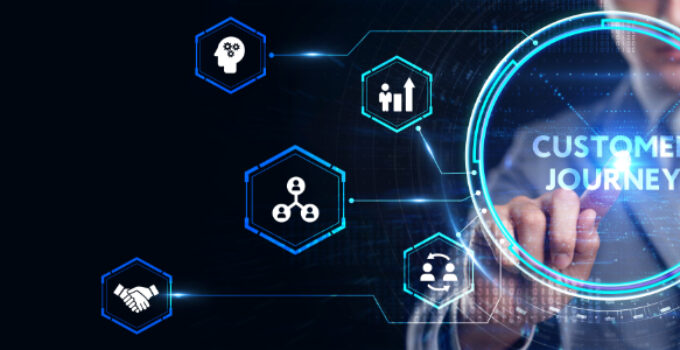Customer Journey Orchestration (CJO) shapes modern business strategies. Grasping this concept is vital for any business aiming for success. This post delves into CJO, illustrating its significance and benefits for businesses. Understanding CJO can revolutionize customer interactions, boosting satisfaction and loyalty. We’ll explore how companies can harness CJO to enhance consumer experiences and drive growth. Prepare to unlock the potential of CJO, a key to thriving in today’s competitive market.
Page Contents
What is Customer Journey Orchestration?

Source: acquire.io
At its core, Customer Journey Orchestration (CJO) is about crafting seamless customer experiences. It’s not just tracking interactions but actively shaping them. CJO involves mapping out each step a consumer takes, understanding their needs and responses. Technology plays a crucial role, offering tools to track, analyze, and influence the customer journey. Businesses embrace CJO to elevate consumer satisfaction, fostering a deeper, more meaningful connection with their audience.
The Customer Journey Mapping Process
Creating a customer journey map is a strategic process in learning what is customer journey orchestration. It starts with identifying every touchpoint – each interaction a consumer has with your brand. Channels, whether online or in-person, also come into play. The next step involves gathering data to gain insights into consumer behavior and preferences. Finally, businesses create a visual map. This map is more than a diagram; it’s a strategic tool, shedding light on opportunities to enhance the customer experience.
The Importance of Data Integration
Data integration is the backbone of effective CJO. It’s about merging information from diverse sources to paint a complete picture of the consumer journey. This holistic view enables personalized experiences, making each consumer feel unique and valued. Tools and platforms for data integration vary, each offering unique features to help businesses understand and influence their customer’s journey.
Implementing Customer Journey Orchestration

Source: email.uplers.com
Putting CJO into action requires careful planning and the right tools. Choosing software or tools that align with your business goals is crucial. Equally important is training employees to use these tools effectively. They need to understand not just the how, but the why behind CJO. Finally, businesses must measure and analyze the results, using this data to refine and improve their strategies.
Benefits of Customer Journey Orchestration

Source: 1827marketing.com
The benefits of CJO are clear and impactful. It’s about more than improving customer satisfaction; it’s about fostering loyalty. Satisfied consumers are more likely to return, boosting sales and revenue. Furthermore, an effective CJO strategy can reduce consumer churn, keeping your audience engaged and connected with your brand. In the long run, these benefits contribute to a stronger, more resilient business.
Conclusion
Understanding and implementing Customer Journey Orchestration is more than a strategy; it’s a necessity in today’s market. We’ve explored the essence of CJO, its implementation, and the immense benefits it offers. As businesses continue to navigate an ever-evolving landscape, embracing CJO is not just an option; it’s a pivotal component of success. Consider how CJO can transform your approach to consumer interaction and experience, paving the way for growth and sustainability.




